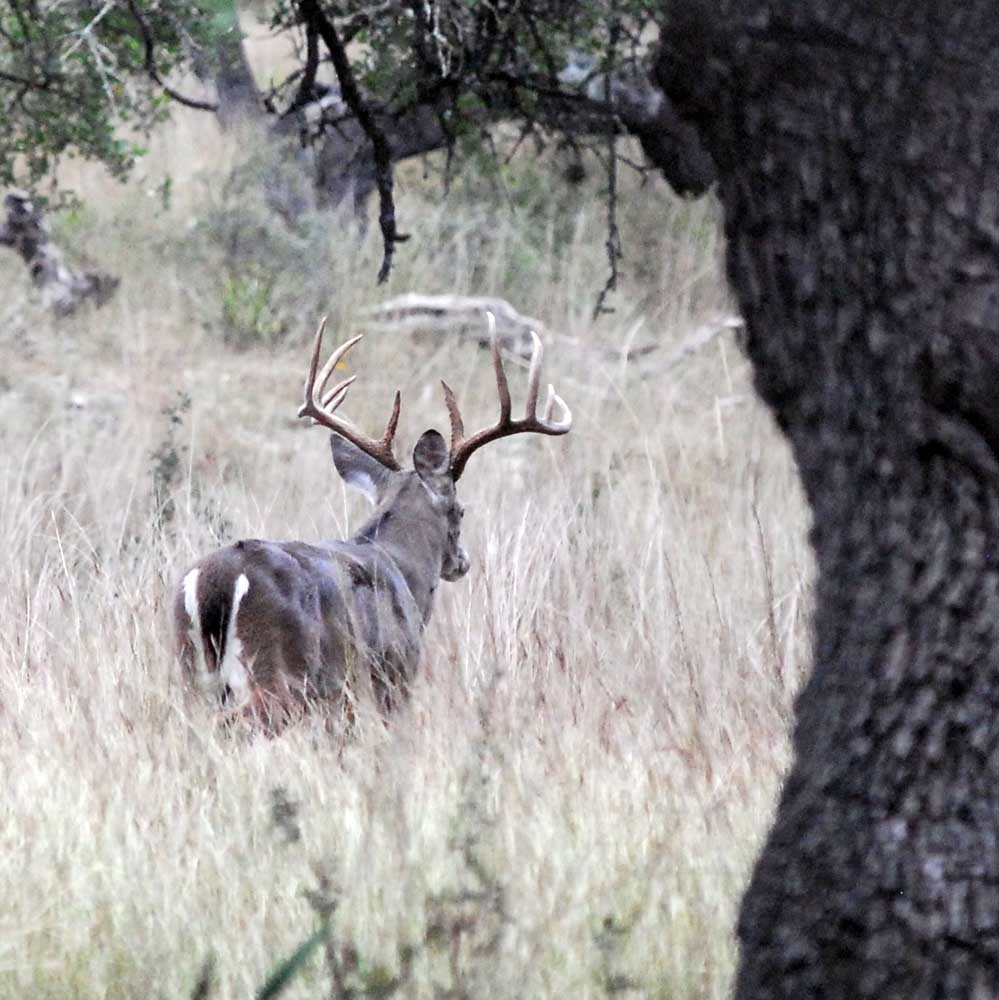Good Times: Excellent Conditions Early Should Result In Big Antler Year
Published 1:32 pm Saturday, September 21, 2019

- Conditions for antler growth were excellent throughout the winter, spring and early summer. That should mean some good bucks available during archery season and early hunting with Managed Lands permits.
For Texas deer hunters the season never ends. There is just a little rest period when they are not in a blind hunting.
That timeout is about to come to an end with the opening of the statewide archery season and the beginning of gun hunting with Managed Lands Deer Permits on Saturday.
It seems like the wait since the end of the last season has been long, but for hunters throughout the state it looks like it is going to have been worth it. Even with a real Texas summer finally showing up, range conditions going back to last fall have been ideal for antler development and deer survival
“Deer season is expected to be a good one this year, even though we have hot, dry weather in August,” said Alan Cain, Texas Parks and Wildlife Department’s white-tailed deer program leader. “Conditions over the past winter and spring resulted in excellent habitat conditions statewide and will translate in to great antler quality this fall statewide. There are a few pockets in western South Texas that are bit drier than the rest of the state, but should still see good quality.”
With a herd growth of almost 4% annually since 2005, Texas has an estimated white-tailed deer population of 5.4 million. During the 2018-19 season hunters took an estimated 884,000 deer. TPWD says about 12% of the harvest comes in October, but it does not break down whether it is by bow hunters or permitted gun hunters.
Surveys have shown more than 185,000 hunters in Texas deer hunt with archery equipment at some point in the entire deer season, a number that has been stable for several years.
Once plagued by a high wound-loss rate, bow hunting’s success rate seemingly has improved over the years with improved equipment. Archery equipment, including bows, arrows and broadheads, and now digital range finders/sights, have come a long way since bow hunting first became legal in a limited number of counties in 1959.
While first designated as an archery-only period, October is now potentially open to a lot of gun hunters as well with almost 12,000 properties covering more than 27.7 million acres enrolled in the MLDP program. Last season, hunters took 189,300 white-tailed deer, or about 21.5% of the total harvest, using the permits.
Whether bow hunting or with a gun, Cain said there are a number of advantages to the early start. One is for those looking for quality bucks — the ability to hunt while the deer are still in a summer pattern and before they begin breaking points fighting in pre-rut and rutting activity.
From a management standpoint it is also a good time to reduce numbers to allow more native vegetation throughout the season and to cull less desirable bucks before they have a chance to breed.
The down side is that warm weather that can slow deer movement and make quick processing urgent. Early hunting can also result in big bucks being taken before they have a chance to breed, which is not optimum. And while fawns are weaned by October, they are still learning from their mothers and could struggle depending on conditions.
Because of previous high fawn crops and a reduced harvest last year, this is expected to be a good antler season.
“Based on the above-average fawn crop in 2012-14, expect to see more bucks in the 5.5- to 7.5-year-old age classes,” Cain said in his annual season outlook. “Over the last five years 14 to 18% of the buck harvest has been comprised of bucks in the 5.5-year-old age class or older, with most of the harvest (43 to 47 percent) comprised of the 3.5- and 4.5-year-old bucks.”
Last year’s total harvest was down about 4%, and hunters took less doe than they have in recent seasons.
According to Cain’s outlook the Edwards Plateau continues to be the deerest spot in Texas with an estimated 2.4 million deer.
“Hunters looking for opportunities to see lots of deer when afield should put this area on the priority list to hunt this fall. Hunter success in this region runs about 78%,” Cain said.
He is projecting above-average antler quality throughout the region, but still recommends hunters do a better job harvesting does to help reduce overall numbers.
In the Pineywoods, where bow hunting really got its start in Texas, the population has fluctuated between about 240,000 and 285,000 deer over the last five years.
“Plagued by relatively low fawn production (16-35 percent) the last five years population growth has remained relatively stable, although the last three years have seen an increasing trend in the fawn production above the long-term average of 30 percent,” Cain said.
Good to above-average fawn production and antler quality is expected in the region, especially on better managed properties.
“Based on previous years fawn production, hunters should expect to see a good number of 1.5-, 2.5- and 6.5-year-old bucks relative to other age classes. Buck harvest trends indicate that 57.8 percent of the harvest were bucks 3.5 years old or older, a byproduct of the antler restriction regulation,” Cain said.
The reports of above-average quality are much the same across the state. If there is a dark cloud, and it is only a tiny one, it might be in South Texas where the numbers of 5.5 and older deer are expected to be down this season. On the other hand, range conditions have been excellent throughout the region during the antler-growing season.
The archery-only season remains open through Nov. 1 this season.







